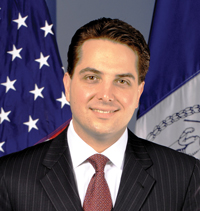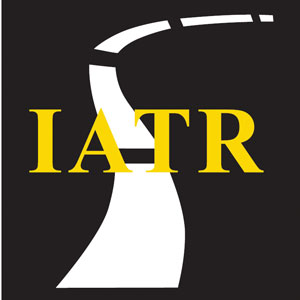 IATR — IN FOCUS
IATR — IN FOCUSPresident, International Association
of Transportation Regulators
Distinguished Lecturer, University Transportation Research Center, Region 2


 IATR — IN FOCUS IATR — IN FOCUS |
||
| by Matthew W. Daus, Esq. President, International Association of Transportation Regulators Distinguished Lecturer, University Transportation Research Center, Region 2 |
 |
 |
Taxi Research Network Obtains Transportation Research Board Approval for First Taxi Group
I am pleased to report that the Taxi Research Network will be working with various committees of the Transportation Research Board ("TRB") to form a new Taxi Research Group. Three TRB standing committees:
(1) Paratransit;
(2) Accessible Transportation and Mobility; and
(3) Airport Terminals and Ground Access
recently voted unanimously to officially create a joint subcommittee known as the "Taxi Group." This new group will work across the disciplines of all three TRB standing committees to establish taxicabs, limousines and other similar private for-hire ground transportation as modes that should be studied in depth and integrated as part of intermodal transportation solutions.
The Taxi Research Network aims to garner more attention and respect from the broader transportation community with respect to the private for-hire vehicle ground transportation mode integrating research, studies and practical transportation policymaking. I am proud to be one of the founding members of the Taxi Network, and look forward to working with the new TRB Taxi Group. I would like to thank and congratulate my colleagues and co-founders, Dr. James Cooper from Napier University, Dr. Ray Mundy from the University of Missouri, and Wim Faber of Brussels, Belgium. Dr. Cooper's persistence and the support of Dr. Mundy on the Airport committee helped to accomplish this significant first step towards meeting our goals.
The TRB is one of six major divisions of the National Research Council— a private, nonprofit institution that is the principal operating agency of the National Academies in providing services to the government, the public, and the scientific and engineering communities. The National Research Council is jointly administered by the National Academy of Sciences, the National Academy of Engineering, and the Institute of Medicine. TRB annually engages more than 7,000 engineers, scientists, and other transportation researchers and practitioners from the public and private sectors and academia, all of whom contribute their expertise in the public interest by participating on TRB committees, panels, and task forces. The program is supported by state transportation departments, federal agencies (including the component administrations of the U.S. Department of Transportation), and other organizations and individuals interested in the development of transportation.
The TRB holds an annual meeting each January which attracts over 12,000 participants and comprises over 1000 specific research committees which has, remarkably, excluded taxicabs until now. The next step for the Taxi Group and the Taxi Research Network is to engage in a scoping exercise to determine the breadth of the new subcommittee's work, and I look forward to working on this new endeavor with my academic colleagues. I have asked the Taxi Research Network to conduct a session to conduct this scoping exercise with the input of regulators, academics and industry stakeholders at this year's annual International Association of Transportation Regulators' (IATR) conference to be held in Toronto during September 2011.
U.S. Department of Transportation Proposes New Rules Restricting Cell Phone Use Impacting Interstate Motor Coach and Limousine Businesses and Drivers
New Federal rules are being proposed by the United States Department of Transportation's (U.S. DOT's) Federal Motor Carrier Safety Administration (FMCSA), to restrict the use of hand-held mobile telephones by Commercial Motor Vehicle (CMV) drivers operating in interstate commerce. These proposed rules allow for hands-free communication as long as the driver does not "reach for, hold or dial" a mobile phone. These new regulations are expected to affect many bus, motor coach, limousine and related ground transportation companies.
In my November 2010 column, I detailed how the Safe, Accountable, Flexible, Efficient Transportation Equity Act (SAFETEA) removed the "limousine exemption" that applied to commercial motor vehicles (CMVs) that transport between 9 and 15 passengers in interstate commerce within a 75 air-mile radius. SAFETEA and subsequently implemented FMCSA regulations now apply motor carrier licensing and safety requirements to limousine businesses that conduct any type of pick up or drop off in a different state, for any distance whatsoever.
Likewise, the proposed Federal cell phone restrictions appear to apply to many businesses and drivers of ground transportation companies deploying buses, shuttles, motor coaches and limousines in interstate commerce. The proposed rules would amend Parts 383, 384, 390, 391 and 392 of Title 49 of the Code of Federal Regulations. These proposed rules would sanction CMV drivers via civil penalties of up to $2,750 per violation as well as disqualify them from driving a CMV for a specific period of time. Furthermore, these rules require interstate motor carriers, which include limousine and other bus and motor coach companies, to "ensure compliance" by their drivers, or else face a civil penalties of up to $11,000 per violation.
With regard to those businesses that utilize buses and motor coaches where the CMV is required to be driven by the holder of a Commercial Drivers License (CDL), the CDL holder will be disqualified from driving for 60 days after a second cell phone conviction and 120 days after a third or subsequent conviction within a 3 year period. In addition, State or local laws restricting or prohibiting hand-held cell phone use would be added to the Federal regulations' list of "serious" traffic offenses. At present, only nine (9) states and the District of Columbia ban all drivers from driving while using hand-held cell phones, including: California; Connecticut; Delaware; Maryland; New Jersey; New York; Oregon; Utah and Washington. These CDL amendments would apply to Federal, State or local government agencies, transit authorities and school districts. State would have up to 3 years to amend their CDL statutes to impose identical penalties, or else not be eligible for grants issued under the Motor Carrier Safety Assistance Program (MCSAP).
The proposed FMCSA rules as well as the procedure for submitting comments can be found on its website www.fmcsa.dot.gov. Unlike other rulemaking procedures, the Federal government's procedures allow for two opportunities to comment. Initial comments on all aspects of the proposed rules are due by February 22, 2011, and reply comments, which are required to address only matters raised in the initial comments, are due by March 21, 2011. The FMCSA's process is highly transparent and comments are posted online for review by all members of the public. I encourage interested readers to participate in the process.